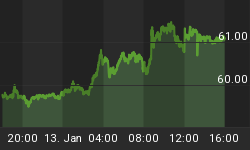Transcript of GoldMoney's James Turk responding to questions/comments from Principally Correct, a visitor to DollarCollapse.com:
Principally Correct: An author wrote in the FAQ on "fiat currency":
"An example of a non-fiat currency would be the gold and silver coins that used to circulate in much of the world. There was only so much of each metal, and the supply only increased when some enterprising miner discovered and dug up more. Governments were unable to create this kind of money out of thin air."
I want to point out that our gold/ silver money issued by the gov't (especially from 1792 to 1964) IS fiat money. The following is an excerpt from an article "Fools' Gold" by Robert Carroll:
http://www.freerepublic.com/focus/news/674984/posts
James Turk: While many of Mr. Carroll's observations and comments are correct, his analysis is flawed because he conflates three very different things: money, currency and credit. Their differences are explained in our book, The Collapse of the Dollar.
Principally Correct: When governments or private banks have attempted to use gold as money, or for the last yea many centuries the fraud perpetrated as gold "backing" or reserves, it has been necessary to establish a monetary price of gold by fiat in an attempt to isolate money from inevitable price fluctuations of commodity gold.
James Turk: There is no difference between monetary gold and commodity gold. Govt's just like to distinguish between the two to make people believe that gold is not money.
Principally Correct: The U. S. Constitution writers anticipated the instability of commodity prices and included the phrase "regulate the value" in the coinage clause. In 1792 after the ratification of the Constitution, the Congress, consistent with the Constitutional mandate, defined specific amounts of gold, silver, and copper as representing dollars. They regulated the value and established a monetary price by fiat.
James Turk: The entire phrase is relevant: "to coin money, and to regulate the value thereof...". The framers meant that Congress could fix the gold/silver ratio - that's all. For a more detailed discussion, see http://www.fgmr.com/pieces8.htm
Principally Correct: I suggest you read the US monetary history
http://www.monetary.org/briefusmonetaryhistory.htm
I used to be a gold/silver bug until I read Stephen Zarlenga's landmark study of monetary history (he studied monetary history from Greek/Roman times to today) in his book "The Lost Science of Money". He initially thought gold and silver was the answer when he first started researching the subject. After 12 years of research, his findings show that money is defined by LAW, not by nature.
James Turk: He is incorrect. Money existed long before governments. I haven't read Zarlenga, but his view is not new or original. Read for example, Knapp (1842-1926) http://en.wikipedia.org/wiki/Georg_Friedrich_Knapp, a German statist who contended the same thing. Neither Knapp or Zarlenga are correct.
Principally Correct: Did you know that in medieval England, they used wooden tally sticks as money, for over 700+ years (until Bank of England came along in 1694)? During this time many beautiful cathedrals were built. Very little gold/silver money were used.
James Turk: Yes, I have seen surviving examples in London. These sticks were a type of currency, not money. Just like paper Federal Reserve notes are a type of currency, but not money.
Principally Correct:
http://www.nationalarchives.gov.uk/museum/item.asp?item_id=6
http://www.xat.org/xat/moneyhistory.html
I also suggest you visit http://www.webofdebt.com/, http://www.monetary.org/, http://www.wealthmoney.org/
James Turk: My views above are consistent with the Austrian School of Economics and its leading proponent, Ludwig von Mises. See http://www.mises.org/
















